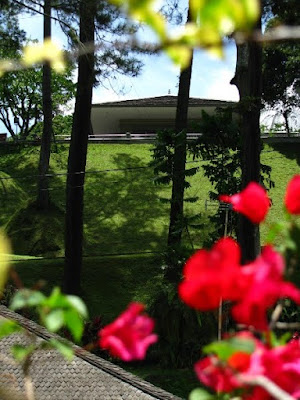Tags: nyobeng tradition bengkayang mengayau dayak bidayuh kalimantan traditional culture
 Nyobeng from various references is a ritual bathing or cleaning the human skull by the results mengayau ancestors. This was done by the Dayak Bidayuh tribe, one of the sub-tribe in Kampung Sebujit Dayak, Sub Siding, Bengkayang District, West Kalimantan.
Nyobeng from various references is a ritual bathing or cleaning the human skull by the results mengayau ancestors. This was done by the Dayak Bidayuh tribe, one of the sub-tribe in Kampung Sebujit Dayak, Sub Siding, Bengkayang District, West Kalimantan.
 Nyobeng from various references is a ritual bathing or cleaning the human skull by the results mengayau ancestors. This was done by the Dayak Bidayuh tribe, one of the sub-tribe in Kampung Sebujit Dayak, Sub Siding, Bengkayang District, West Kalimantan.
Nyobeng from various references is a ritual bathing or cleaning the human skull by the results mengayau ancestors. This was done by the Dayak Bidayuh tribe, one of the sub-tribe in Kampung Sebujit Dayak, Sub Siding, Bengkayang District, West Kalimantan. BENGKAYANG
MENGAYAU is beheading people, and the skull preserved. Now, the tradition mengayau has not done anymore . The ceremony was quite touching, and lasted for three days. Starting on 15 to 17 June.
Its main activities namely, bathing the skull that are stored in custom homes. As a rule believed to be hereditary. Starting greet guests at the village boundaries. Initially, this was done to welcome members of the group who came from mengayau. Greeter, wearing a sash of red cloth decorated with beads of animal teeth. Comes with chopsticks and destroyed the gun sounded, when the invited guests would enter the village limits. Chopsticks also pointed simultaneously.
Blast from the gun apart, is also useful to call the ancestral spirits at once asked permission for the implementation of Nyobeng ritual. Then, traditional elders threw dog into the air. In saber, the chairman of the party guests have to cut them down. If still alive, should be cut with a saber once fell to the ground. Procession The same goes for chicken. Traditional elders to the group throwing eggs guest. If the egg is not broken, then the guests who came to be insincere. Conversely, if broken, means guests come with sincerity.
White and yellow rice was thrown while reciting mantras. The girls then serve wine from mixed mimic tree bark that has dried pakak. After drinking, the group was escorted to Guest Houses Balug, in the middle of the township.
Houses Balug is a traditional house in the form of houses on stilts and is round. To enter this house, made steps made from bar tree. Approximately 10 meters in width with a height of 15 meters from the ground.
When you sign in place of the ceremony, the group given a splash of water that has been given a spell with anjuang leaf, which serves as a starting reinforcements. The goal, for the guests to avoid disaster. When entering the ceremony, guests must tread gourd fruit placed in the basin is better known as the ritual pepasan.
Together with residents, guests then danced around the house dance Mamiamis while customary. Mamiamis, is a dance to welcome and honor the defenders of ancestral lands, newly arrived from mengayau. While indigenous Elders accompanied by singing songs and reading spells.
Traditional elders rose Houses Balug. Simlog was beaten and firecrackers sounded. The goal is to summon ancestral spirits and also as a sign of the commencement ceremony Nyobeng. Followed by dinner in the House Balug. with rice with fish, pork. Tolerance is too high. For Muslims, provided special diet rather than pork. After dining, guests may leave the area of custom homes.
The choices people can rest at home. At rest, the majority of men in the area through the forest to look for bamboo forests. Diameter of about tens of centimeters.
At the same time, every home makes offerings that dioles with the blood of chicken wings. It also sprinkled chicken blood to the parts of the house and yard are considered sacred.
After that the family and guests back to the traditional house. After the bamboo forest can be searched, the men carried him toward the custom house in a gang. By holding the saber bamboo surrounded as he marched.
Saber who brought a family heirloom. Decoration on the saber hilt made of bone or wood. The ornaments also as a symbol of meaning and specific achievements of the holder in mengayau saber. Proper preparation. Chairman custom cue to start activities. One step forward, opening the saber from the scabbard while slashing saber to a bamboo rod.
In one slash, broken bamboo. This success is a good sign, according to public confidence. After the show was cut bamboo. Ruh was summoned by the head of customs.
The goal is to deliver and apply for permission which has protected to start Nyobeng. Traditional elders later, climbed the stage house. Seven kinds of offerings will be placed on the village boundary. Then, the box located on the pinnacle of custom homes in which stored human skulls and a necklace of boar tusks, taken by the traditional elders and rubbed his hands with a special potion.
Then the topical application of the skull that is in the box. Next Katuas hinga a chicken head cut off. The head and drops of blood smeared on the skull of the chicken. The skull is inserted again in the box and stored. The event was followed by cutting the dog.
The blood that comes out in support poles is swabbed with custom homes, small houses, and statues of men and women who are in addition to the traditional house and sculpture. Houses and the statues are regarded as the origin of their ancestors. Cutting the dog is intended to reject the evil spirits. Some dog meat freshly cut and then brought onto the customs house.
 6:01 AM
6:01 AM
 admin
admin











